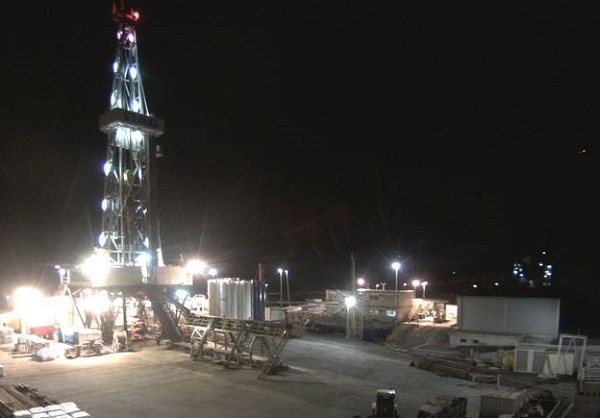An old connection recently given a jolt of attention – the link between earthquakes and geothermal exploration – continues to rumble through the energy world.
We recently saw the release of one study that suggested the practice of disposing of wastewater from natural gas development in deep injection wells can leave areas more vulnerable to triggered quakes than previously thought. And there was another study that laid out a possible means of forecasting the seismic outcome of varied levels of geothermal operation.

Now comes word out of Switzerland that the Swiss Seismological Service has linked a 3.6 quake last week to a geothermal project:
The quake is likely directly related to the tests and stimulation activities in the borehole of the planned St. Gallen geothermal project, where numerous micro-earthquakes have already occurred at the base of the borehole in recent days.
The St. Gallen Geothermal Project, now temporarily shut down, is a bid by Switzerland to take advantage of what is thought to be an extensive geothermal resource. According to the government, in recent years as much as 90 percent of the energy used to heat St. Gallen, in northeastern Switzerland, has come from fossil fuels. But with feasibility studies showing that “water as hot as 170 degrees Celsius could be tapped at 4,000-5,000 meters beneath the district of Au,” a project was launched.
While the Swiss seismological service tied the quakes to the geothermal activity, a German/Swiss geothermal industry association offered a more nuanced assessment.
“One thing is certain: The drilling work had been completed and did not cause the seismic activity,” said Professor Thomas Kohl of the Institute for Applied Goesciences, KIT in Karlsruhe, quoted in a statement [PDF] from the Wirtschaftsforum Geothermie. “The gas inflow was discovered only during the work which followed. The quake was a consequence of that.
A Euronews story noted that this isn’t the first time the Swiss have recoiled when reminded of geothermal’s earthquake risk. “Geothermal drilling in late 2006 and early 2007 near Basel caused a series of earthquakes, some greater than magnitude 3, leading to the scrapping of the project to build Switzerland’s first geothermal plant,” the news service reported.
The question, of course, isn’t whether there might be earthquakes associated with geothermal – it’s whether those earthquakes might be big enough to pose a threat. In most cases, as in The Geysers field in Northern California, the biggest geothermal field in the world, they aren’t and they don’t.
Probably more important is how the seismic risk plays out with enhanced geothermal system technology, which many believe can help geothermal blossom as a utility-scale power source, but which also comes with greater earthquake risk. With EGS, pressurized fluid is forced into hot, dry rock formations, causing a web of fissures to develop in the rock. The fissures can then be filled with water, which becomes heated and is pumped up to the surface to be used to generate power.
Editor’s note: This story was updated after initial publication to add information from the Wirtschaftsforum Geothermie.